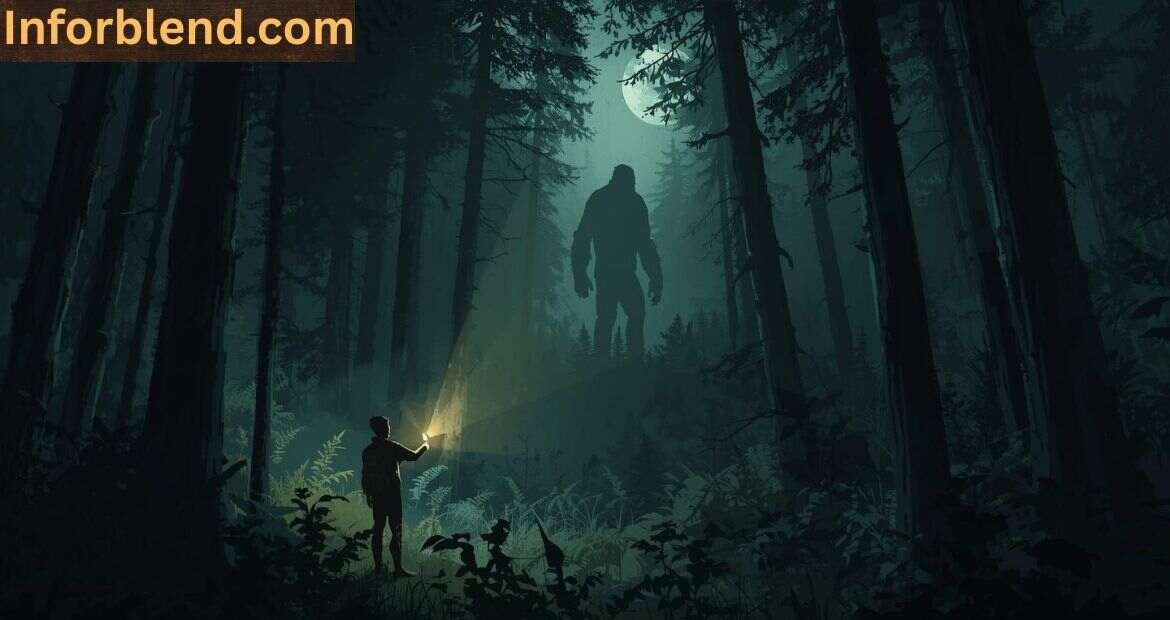The fascination with mysterious creatures has existed for centuries, but among them, Bigfoot is perhaps the most famous. Stories about this giant, ape-like figure roaming forests and mountains attract millions worldwide. Yet, while the mystery may be entertaining, the reality is explored in “The Hidden Risks and Harms of Believing in Bigfoot: Myths, Psychology, and Social Impact.” From misinformation and financial exploitation to psychological effects and environmental consequences, the belief carries more weight than it first appears. Understanding these risks provides clarity for readers, researchers, and those who engage with folklore.
The Origins of the Bigfoot Legend
Early Accounts
Bigfoot, also called Sasquatch, has roots in Native American folklore. Tribes across the Pacific Northwest spoke of a large, hairy being who lived deep in forests. These tales often described the creature as both mystical and dangerous.
The Modern Obsession
The modern Bigfoot craze began in the 1950s with supposed footprint discoveries. In 1967, the famous Patterson-Gimlin film further fueled belief. Since then, thousands have claimed sightings, fueling books, movies, and TV shows. The mythology has grown from whispers of campfire stories into a pop culture empire.
Psychological Risks of Believing in Bigfoot
Cognitive Dissonance
One danger of believing in Bigfoot is cognitive dissonance. People may reject science, rational thinking, or evidence that conflicts with their beliefs. This can foster mistrust in credible institutions.
Escapism and Obsession
For some, the Bigfoot narrative becomes an escape from reality. Over time, obsession can lead to social isolation, financial loss from constant expeditions, and anxiety if expectations are not met.
Psychological Vulnerability
Individuals already struggling with stress, paranoia, or loneliness may become more vulnerable. Belief in unproven phenomena sometimes fuels broader conspiratorial thinking. This mindset can make it harder to distinguish reality from myth, damaging long-term mental health.
Social and Cultural Harms
Stigmatization
Believers often face ridicule or social stigma. This can create divides between communities, sometimes leading to mistrust or even hostility.
Spread of Misinformation
Legends like Bigfoot can amplify misinformation. When myths are spread as facts, it weakens public understanding of science. This issue grows in an age where conspiracy theories thrive online.
Financial and Legal Risks
Exploitation
Belief in Bigfoot has created a profitable industry. From merchandise to expensive tours, businesses may exploit people’s fascination. Some spend large sums chasing evidence that does not exist.
Land Use and Trespassing
People searching for Bigfoot sometimes trespass on private land or protected wilderness. This brings legal issues, fines, and potential danger.
Environmental Harms
Wildlife Disturbance
Expeditions searching for Bigfoot often disturb wildlife. Noise, litter, and habitat disruption affect animals and ecosystems.
Conservation Misguidance
Some funds go into cryptid research instead of legitimate conservation efforts. Protecting endangered species is far more beneficial than searching for unverified creatures.
Ecological Footprint of Bigfoot Tourism
Tourism linked to Bigfoot sightings has created an unexpected ecological footprint. Large groups traveling into remote areas increase pollution, trample fragile habitats, and strain already vulnerable ecosystems. While tourism generates revenue, the environmental toll is a hidden cost.
Statistical Insights into Belief
Studies suggest nearly 10–15% of Americans believe Bigfoot exists, with some surveys reporting up to 1 in 5 people remain undecided but “open” to the idea. Sightings are reported across North America, with hotspots in Washington, Oregon, and British Columbia.
Globally, similar myths exist:
- Yeti in the Himalayas
- Almas in Central Asia
- Yowie in Australia
These statistics highlight a universal human attraction to myths of hidden creatures. Online communities dedicated to Bigfoot attract hundreds of thousands of followers, proving how deeply folklore integrates into modern culture.
Future Trends in Bigfoot Belief
With advancing technology, including drones, trail cameras, and AI-enhanced analysis, one might expect conclusive evidence if Bigfoot were real. Yet, despite modern tools, no verified proof has emerged.
Looking ahead, experts predict that Bigfoot will remain a symbol of digital-age folklore rather than a biological discovery. The internet has amplified such myths through YouTube channels, podcasts, and TikTok creators who continue to share “evidence” and sightings.
The future of Bigfoot belief may not lie in the forests but in online spaces. The creature is transforming into a cultural brand, merging entertainment, tourism, and social media storytelling. Instead of vanishing, belief in Bigfoot may become even more widespread — but as a form of mythology, not science.
Frequently Asked Questions (FAQs)
Q1: Why do people believe in Bigfoot?
People are drawn to mystery and folklore. Cultural stories, media, and psychological desire for the unknown fuel belief.
Q2: Is there scientific proof of Bigfoot?
No verified scientific evidence supports the existence of Bigfoot. Most sightings are linked to misidentification, hoaxes, or folklore.
Q3: What are the risks of believing in Bigfoot?
Risks include misinformation, financial loss, environmental harm, legal issues, and potential psychological effects.
Q4: Could belief in Bigfoot ever benefit society?
Some argue that Bigfoot inspires interest in nature, folklore, and adventure. Yet, the harms outweigh the benefits when belief shifts into obsession.
Q5: Will people stop believing in Bigfoot?
It is unlikely. Myths endure because they fulfill cultural and psychological needs. The story of Bigfoot will likely endure for generations.
Conclusion
The risks or harms of believing in Bigfoot extend beyond harmless fun. While the legend entertains and enriches culture, unchecked belief can cause psychological, financial, environmental, and social damage. Myths should be enjoyed as stories, not mistaken for truth. By recognizing the risks, individuals can appreciate folklore without falling into harmful consequences.

